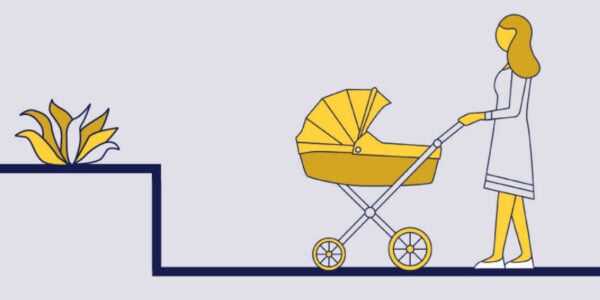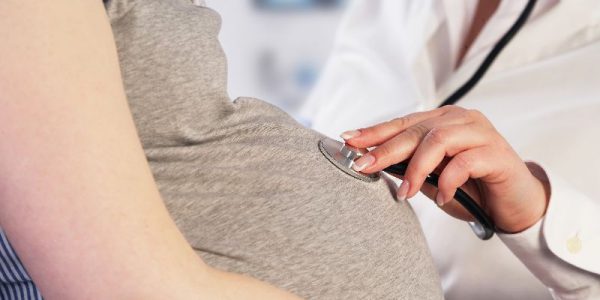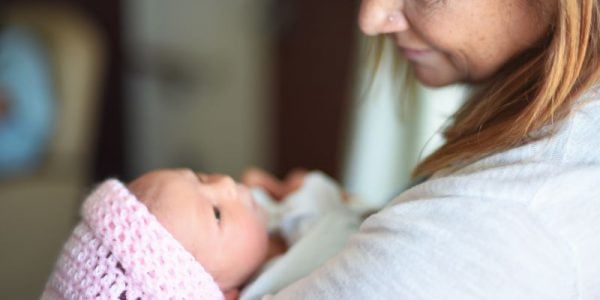Introduction
This summary highlights the key findings of research that provides an updated picture of the scale and pattern of mothers in recurrent care proceedings in England and Wales data produced routinely by Cafcass and Cafcass Cymru between 2011/12 and 2020/21.
In order to try and better understand the profile and needs of women in recurrent proceedings – and hence better tailor services – the analysis distinguishes between mothers who return to court with a new child (typically a new baby) and mothers who return to court with the same child because a care arrangement has broken down or requires changing (for example, placement with family and friends).
In terms of women returning to court with a new child, the service challenge is how to help manage the pain of intensive support (and their partners) avoid the removal of a subsequent.
In terms of women returning to court with the same child, the challenge is how to support alternative caregiver arrangements, or support reunification, to ensure these that plans for the child have a greater chance of success.
Key Findings
Overview
- In England and Wales approximately 1 in 4 women is at risk of returning to court for subsequent care proceedings within 10 years of their first appearance in care proceedings. This finding is consistent with findings reported in 2015 for England and 2017 for Wales.
- Approximately 1 in 5 mothers who return to court with a new child (as opposed to the child who was the subject of previous proceedings) is at risk of returning to court within 10 years.
- The risk of returning to court is highest within the first three years the initial proceedings. Following a first return to court, the risk of further return increases.
- The risk of returning to court is higher for mothers who first gave birth when young and if the child in the first set of proceedings is subject to a placement order (plan for adoption).
- There are marked regional differences between rates of recurrence London and the South West on the one hand, and other areas of England on the other. There are particularly high rates in the North East, the Midlands, Yorkshire and the Humber and the North West.
How many mothers are in recurrent proceedings?
Of the 96,457 mothers who appeared in care proceedings in England and
Wales between 2011/12 and 2020/21:
- In England, 17,205 mothers (18.9% of the total in care proceedings) returned to court following an initial (index) appearance
-
12,772 (14.1%) mothers returned to court with at least one new child
-
4,433 (4.9%) mothers returned to court with the same child
-
In Wales, 920 mothers (16.3% of the total in care proceedings) returned to court following an index appearance.
-
777 (13.8%) mothers returned to court with at least one new child
-
143 (2.5%) mothers returned to court with the same child.
Overall, these new figures show a marked growth in the number of mothers in recurrent proceedings since earlier benchmark reports (Broadhurst et al. 2015, 2017). This growth in size of the population of recurrent mothers is linked to the marked increase in the volume of care proceedings nationally, rather than to an increase in the risk of recurrence.
How old were mothers in recurrent proceedings at their first births?
Mothers who experience recurrent care proceedings are far younger at the birth of their first child, than other mothers (Broadhurst et al. 2015, 2017; Boddy et al. 2020) – but the proportion of very young women among those returning to court with a new child is striking:
In England, 41.8% of mothers returning to court with a new child, and in Wales 41.7%, were estimated to be 14–19 years old at the birth of their first child.
How old was the youngest child at the mother’s first repeat proceedings?
Risk in recurrent cases typically centres on cases that include babies.
In terms of mothers returning to court with a new child, 83.3% of first repeat cases involved babies aged 11 months or younger in England, with a similar picture in Wales (84.1%). In only 4.3% of cases in England and Wales was the youngest child aged 10 or over.
In terms of mothers returning to court with the same child, the majority of cases in both England (64.0%) and Wales (67.2%) involved children aged 1–9 years. This is in line with expectations given that these cases concern the same child.
Do proceedings concern a single child or sibling group?
In both England (86.9%) and Wales (90.2%), most first repeat proceedings in cases where mothers returned to court with child concerned a single child (typically a baby).
Most cases where mothers returned with the same child also concerned a single child (64.4% in England and 69.9% in Wales) – but the proportion of children with one or more siblings in the same set of proceedings was higher.
What were the legal outcomes?
In England:
- The proportion of plans for children that result in permanent severance of parental rights is far greater in cases where mothers return to court with a new child – 38.6% of children were subject to a placement order (plan for adoption) at the close of proceedings, with only a small proportion (12.7%) subject to a standalone supervision order (indicating return to parents).
- In cases where mothers return with the same child, only 12.1% of children were subject to a placement order (plan for adoption) with the remainder of children subject to orders indicating placements in care with family and friends or returned to family.
In Wales a narrower use of the range of legal orders open to the courts means it is harder to infer final placements for children. However, on the basis of available information:
- More children were subject to placement orders (plans for adoption) in cases where mothers return to court with a new child (26.1%) than in cases where mothers return with the same child (8.4%).
What is the likelihood that mothers will be involved in repeat proceedings?
We estimate that approximately 1 in 4 women in England and Wales is at risk of return to court within 10 years of the issue of their index set of proceedings.
In England, the cumulative probability of a mother entering her first set of repeat proceedings with either a new or previous child is 24.0% within 7 years, and 27.1% within 10 years.
In Wales, the probability of recurrence within seven years is 23.2% and 26.5% at 10 years.
These estimates of the probability of recurrence remain largely consistent with those reported in 2015 and 2017 for England (Broadhurst et al., 2015. 2017) and in 2020 for Wales (Alrouh et al. 2020). Over a longer period, we see a marginal increase in the cumulative probability, but overall, the statistics indicate a problem that has not markedly changed since earlier benchmarks.
What is the likelihood of a mother returning to court with a different child after a first experience of care proceedings?
We estimate that approximately 1 in every 5 mothers in England and Wales returning to court with a new child is likely to return to court within 10 years of the issue of their index set of proceedings.
- In England, the risk of mothers returning to court within 7 years is 19.0%. For mothers returning to court with a new child, this increases to 21.1% within 10 years.
- In Wales, the risk of returning is 19.0% within 7 years and 21.7% within 10 for mothers returning to court with a new child.
How likely are mothers returning to court with a new child to experience a second repeat proceeding?
Mothers who experience a first repeat episode are at heightened risk of a second repeat episode. In England, 33.0% of mothers returning to court with a new child are at risk of returning in a second episode within 10 years, and in Wales, 26.9%.
When is the risk of return for mothers returning to court with a new child at its highest?
In both England and Wales, the hazard rate shows that the risk of returning to court for s.31 proceedings is highest in the first three years and begins to decline thereafter. Regarding a first repeat, the hazard is the highest at year one, whereas for a second repeat, the hazard is highest at year two.
Based on the variables available to the team, heightened risk of return is associated with young motherhood, and whether a child is subject to a plan for adoption (placement order).
Do recurrence rates for mothers returning to court with a new child vary by region?
The study found marked regional differences between London and the South West on the one hand and the rest of England on the other.
The highest rates of recurrence were recorded in the North East, the Midlands, Yorkshire and the Humber, and the North West. In the North East the risk of recurrence for mothers returning to court with a new child is 23.9%, whereas in London it is 17.2%.
Conclusions and recommendations
The report findings indicate that a sizeable proportion of mothers in England and Wales are likely to return to court having appeared previously in care proceedings.
Despite almost a decade of research and service innovation, the national picture is of little change in England and Wales, when we measure the national risk of a first repeat set of care proceedings. Moreover, given the increase in the volume of care proceedings in England and Wales, far more mothers are experiencing a return to court.
So, how do we explain these findings? In England and Wales, service developments have been uneven across the country – some preventative services have closed and there are many areas with no service at all. Although evaluations of local services addressing recurrence provide evidence of positive impact in relation to the mothers in receipt of services, it is likely that they are simply of insufficient scale to reduce women’s risk of return. There is a lack of robust national data on service developments (the scale of initiatives, their duration, or how many women in total received a service).
The stark findings about the scale of teenage motherhood (14–19 years) indicate that far more attention must be paid to the needs of young mothers, their partners and wider family networks. To date much of the published research literature on care proceedings has not differentiated parents by age. Yet young parents wrestling with their own developmental needs – and typically with very limited social and financial resources – clearly warrant special attention in terms of how they are supported to navigate the family justice system. In addition, further work is needed to understand: the scope of preventative practice when young parents face care proceedings; the consistency of tailored support and advocacy during care proceedings; and what help young parents receive if children are removed from their care.
To progress an agenda to reduce recurrent care proceedings, the following five points are key.
- Preparation for parenthood needs to start prior to a first pregnancy and support for young parents, including care leavers, needs to be strengthened in pregnancy, during care proceedings and beyond. This research highlights a high risk of return to court for young mothers, building on previous research that reported that many of these young mothers are also care leavers (Broadhurst et al. 2017; Broadhurst and Mason 2020; Boddy et al. 2020).
- Evidence of a heightened risk following a first repeat appearance suggests that the best solution to the possible pattern of repeat proceedings once a child has been removed would be to offer all parents in that situation intensive and tailored support to rebuild their lives. A universal entitlement to continuing help from specialist adult-focused services would be the best way forward.
- The bar needs to be raised in terms of ensuring resources are available for the collection and synthesis of local area evaluation data (while recognising the challenge of finding funds for small-scale evaluation). At present services are holding valuable data – but there is limited collation of this data across services. At a national level, HM Courts & Tribunals Service should examine options for including monitoring data on recurrence within family court statistics.
- Evaluation outcome data must be compared with what we might have expected had services not been available.
- Investment and service development must align more closely with regional need. For areas with high rates of care proceedings, it may be difficult to move resources upstream to prevent recurrence, therefore allocation of funding proportionate to need is required.
Read more
We will be publishing four blogs in response to the findings and recommendations of this report.
Read the blog by Supporting Parents Community of Practice
Read the blog by Ellen Marks, director of practice and learning at Pause
References
Boddy, J. Bowyer, S., Godar, R., Hale, C., Kearney, J., Preston, O., Wheeler, B. and Wilkinson, J. (2020). Evaluation of Pause. Department for Education. https://assets.publishing.service.gov.uk/government/uploads/system/uploads/attachment_data/file/932816/Pause_-_Sussex.pdf
Broadhurst, K., Alrouh, B., Yeend, E., Harwin, J., Shaw, M., Pilling, M., Mason, C. and Kershaw, S. (2015). Connecting events in time to identify a hidden population: Birth mothers and their children in recurrent care proceedings in England. The British Journal of Social Work, 45(8), pp. 2241–2260. https://academic.oup.com/bjsw/article/45/8/2241/2494830
Broadhurst, K., Mason, C., Bedston, S., Alrouh, B., Morriss, L., McQuarrie, T.,Palmer, M., Shaw, M., Harwin, J. and Kershaw, S. (2017). Vulnerable birth mothers and recurrent care proceedings. University of Lancaster.
http://wp.lancs.ac.uk/recurrent-care/files/2017/10/mrc_final_main_report_v1.0.pdf
Broadhurst, K. and Mason, C. (2020). Child removal as the gateway to further adversity: Birth mother accounts of the immediate and enduring collateral consequences of child removal. Qualitative Social Work, 19(1), pp. 15–37.
https://journals.sagepub.com/doi/10.1177/1473325019893412
Office for National Statistics. (2020). Office for National Statistics.
https://www.ons.gov.uk/peoplepopulationandcommunity/birthsdeathsandmarriages/livebirths/datasets/birthsummarytables
-
 Family Justice Data Partnership
Family Justice Data Partnership -
 Lancaster University
Lancaster University -
 The Centre for Child and Family Justice Research
The Centre for Child and Family Justice Research -
 Swansea University Medical School
Swansea University Medical School -
 Population Data Science at Swansea University
Population Data Science at Swansea University -
 SAIL Databank
SAIL Databank











